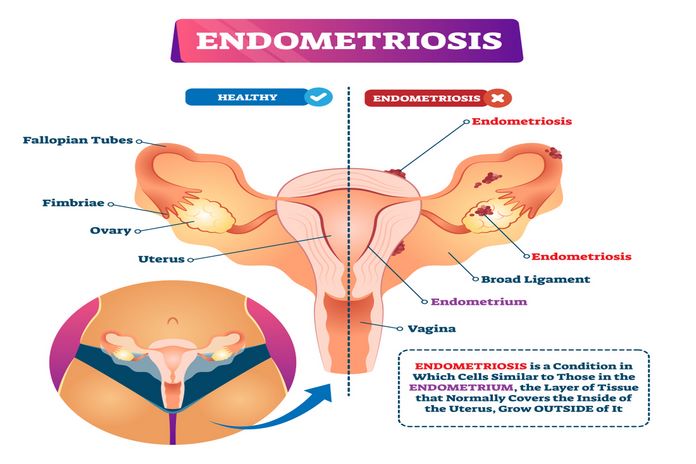Endometriosis stages

The condition of endometriosis has four different stages, and according to the medical professionals, the studies get evidence from the severity of lesions and the number of endometrial implants. The staging system for endometriosis also depends on the depth of endometrial implants. According to the American Society of reproductive medicine (ASRM), there is a revision in the classification system for endometriosis, which involves the point system. The point system includes the manner to grade the condition and determine an accurate classification numerically. For example, a score of 15 or less predicts that the disease is at a minimal or mild stage. While a score of 16 or higher might indicate a severe or moderate condition. It is essential to understand that the endometriosis stage does not necessarily indicate the pain level or the symptoms appearing. Following are the four stages of endometriosis:
Stage 1
Stage 1 includes a minimal amount of superficial implants. The symptoms of endometriosis are also mild, and it is known as peritoneal endometriosis. At this stage, the peritoneum, a membrane that lines the abdomen, gets porous as the endometriosis tissue causes infiltration.
Stage 2
At this stage, the implants of endometriosis are higher in number and are deeper. The patient has minimal symptoms. This stage is also known as ovarian endometriosis. There is an occurrence of cysts around the ovaries, and these cysts appear as chocolate brown. This stage of endometriosis is of particular concern mainly because the cysts establishing within the ovaries are at risk of breaking the cysts developing within the ovaries might break and spread endometrial tissues all over the pelvic cavity.
Stage 3
At stage three, the symptoms are severe compared to stage two, and there are many deep implants of endometrial tissues. There is an establishment of adhesions made of fibrous bands. Small cysts start appearing on both of the ovaries, and sometimes on one ovary; this stage is also called deep infiltrating endometriosis 1. Thus, the endometrial tissues start involving the organs present in the pelvic cavity. The organs suffering from endometriosis include the rectum, ovaries, and uterus. At stage three of endometriosis, the symptoms get severe and lead to a frozen pelvis, which is an extreme case.
Stage 4
Stage 4 of endometriosis symptoms are severe, and there are several numbers of deep implants of endometriosis. Large cysts start establishing on either side of the ovaries and result in dense adhesions by the endometrial tissues.
The categories of endometriosis can be many, and there is a complication of simply categorizing the symptoms and severity of endometriosis. There are so many variations in every stage because the lesions are present in different locations, and the level of pain also varies among each patient. The staging system also gives insight into the organs and their complexity involving in the stage of endometriosis.
